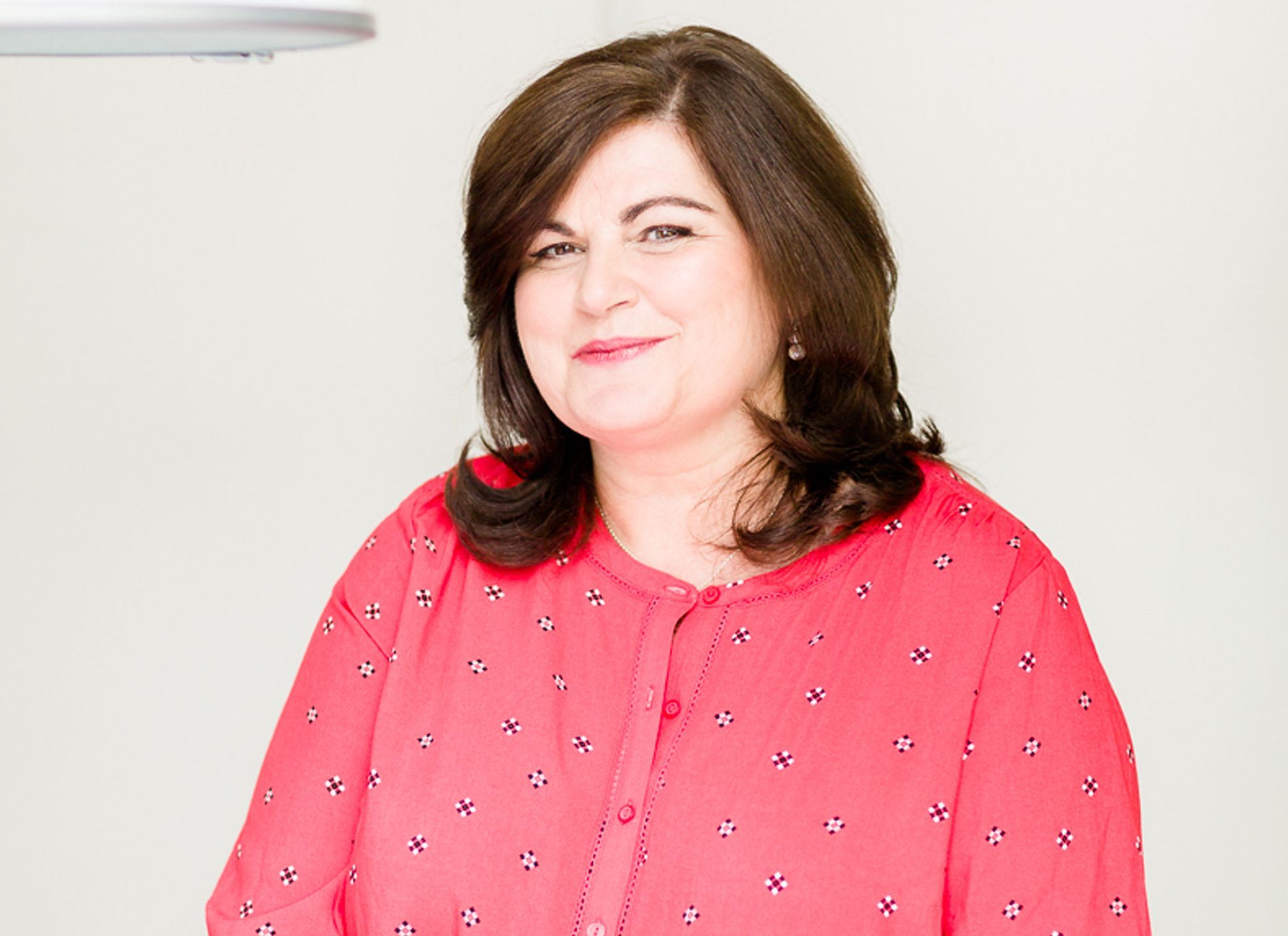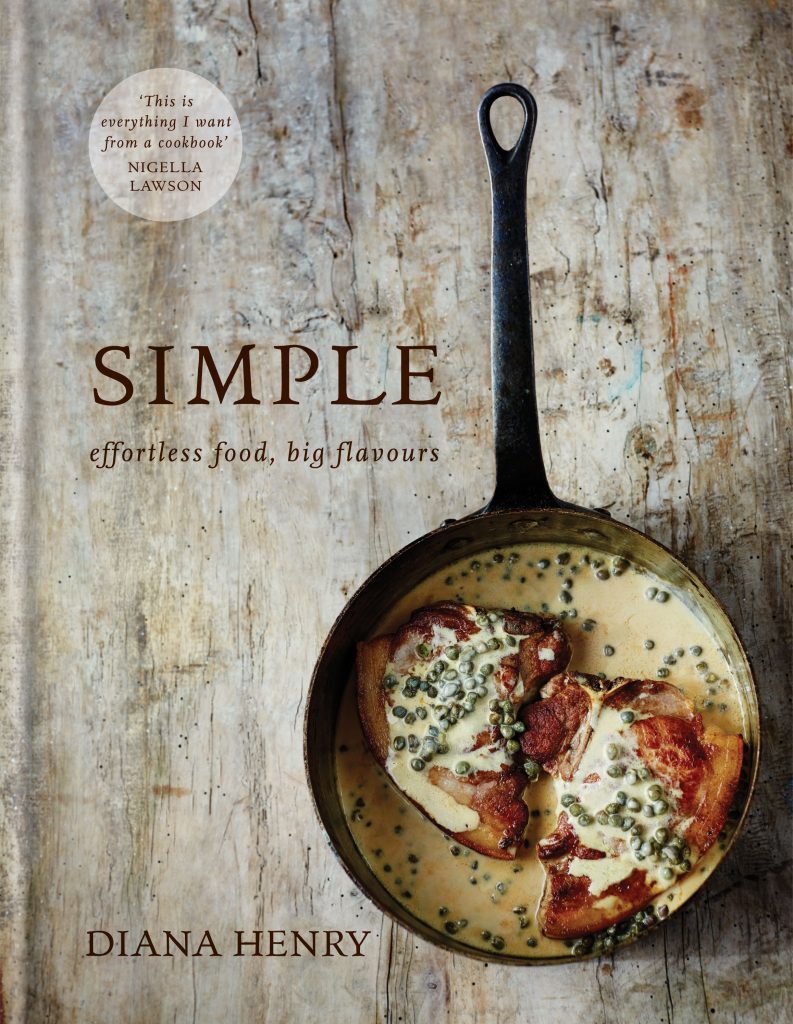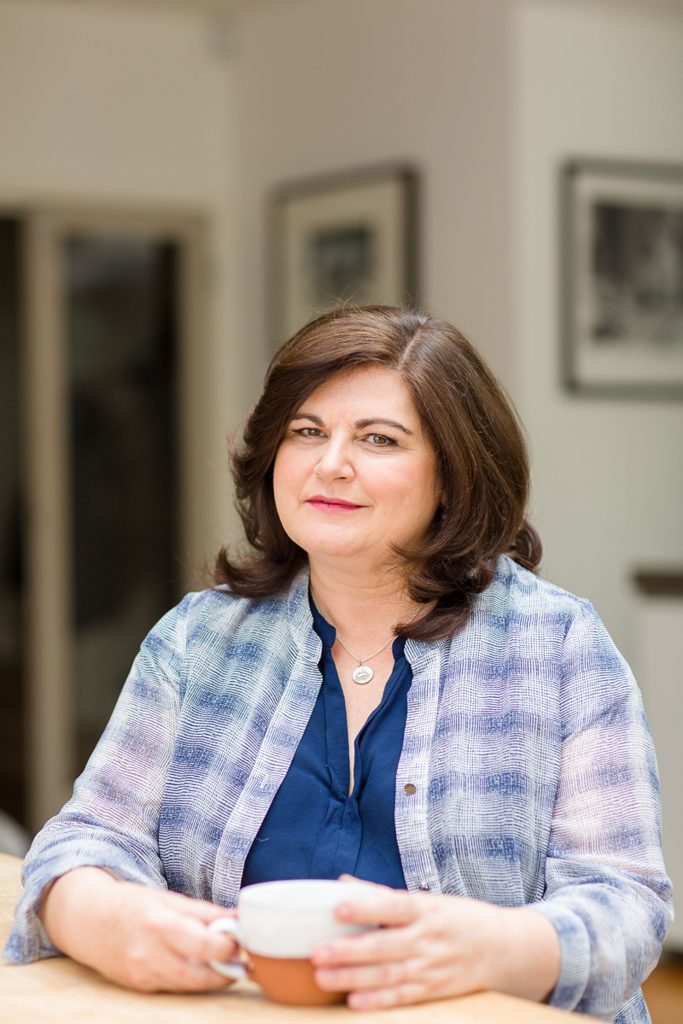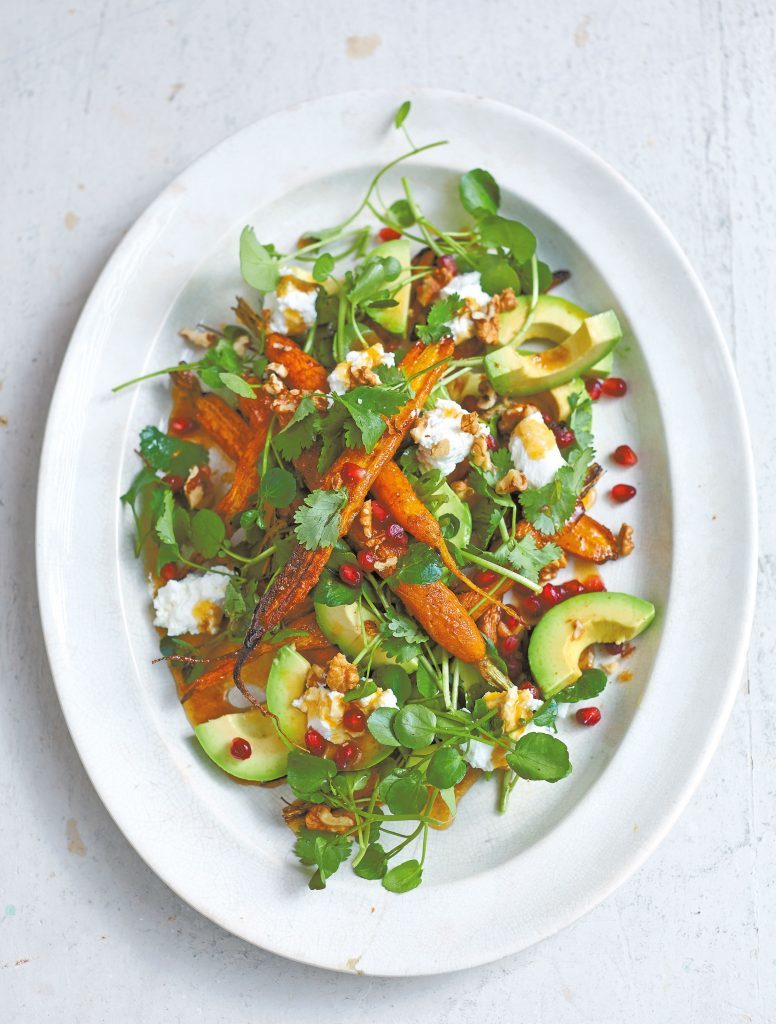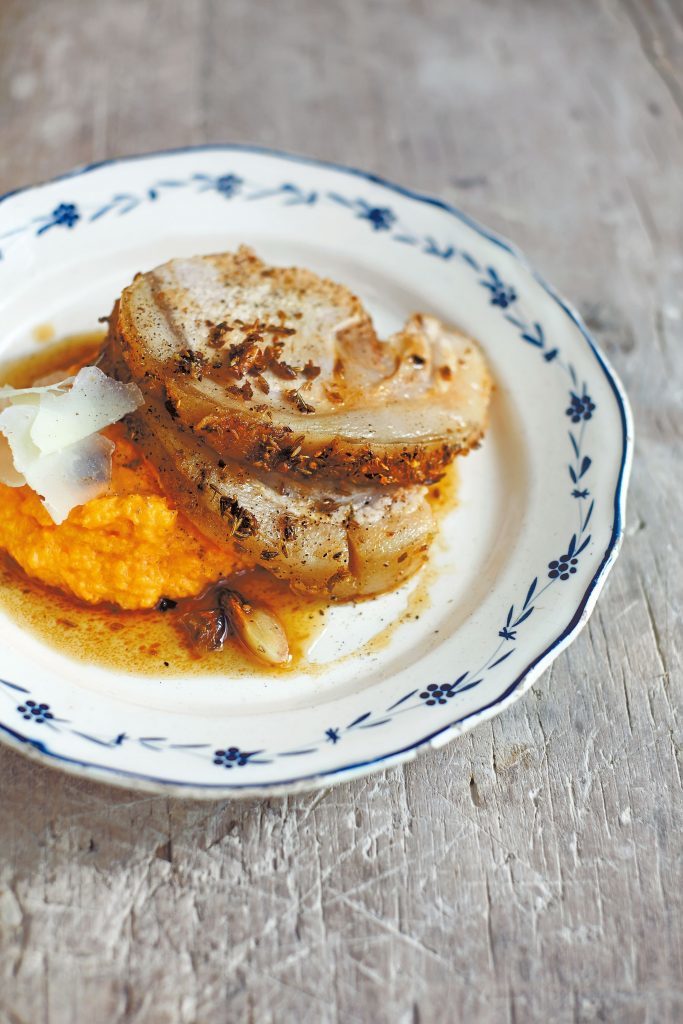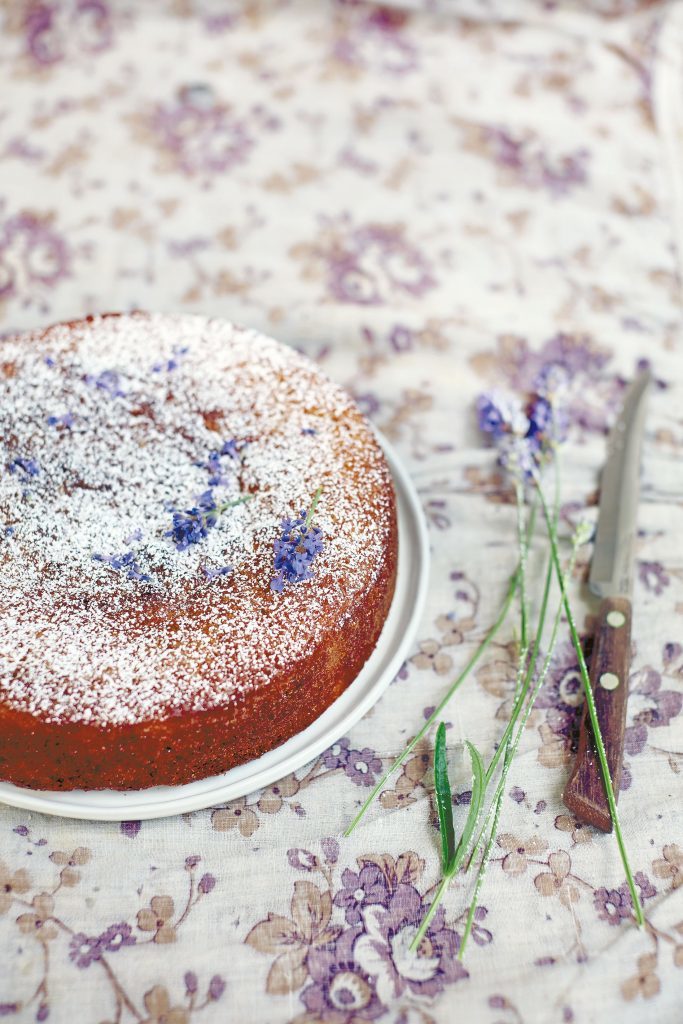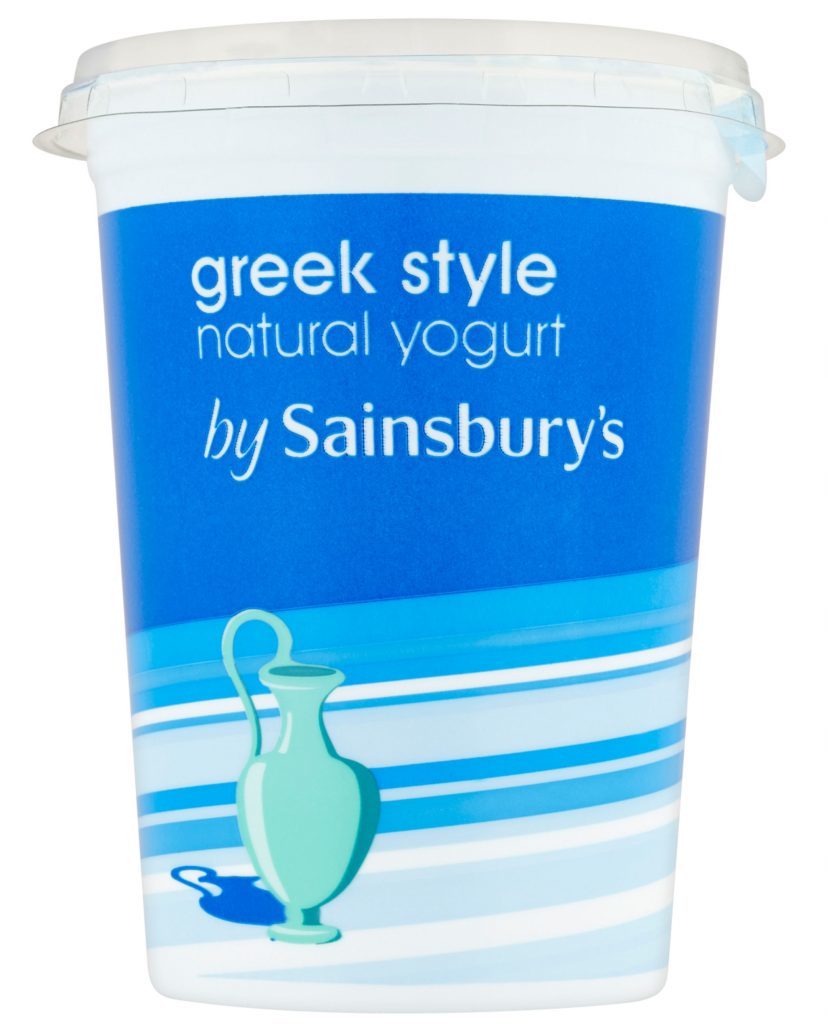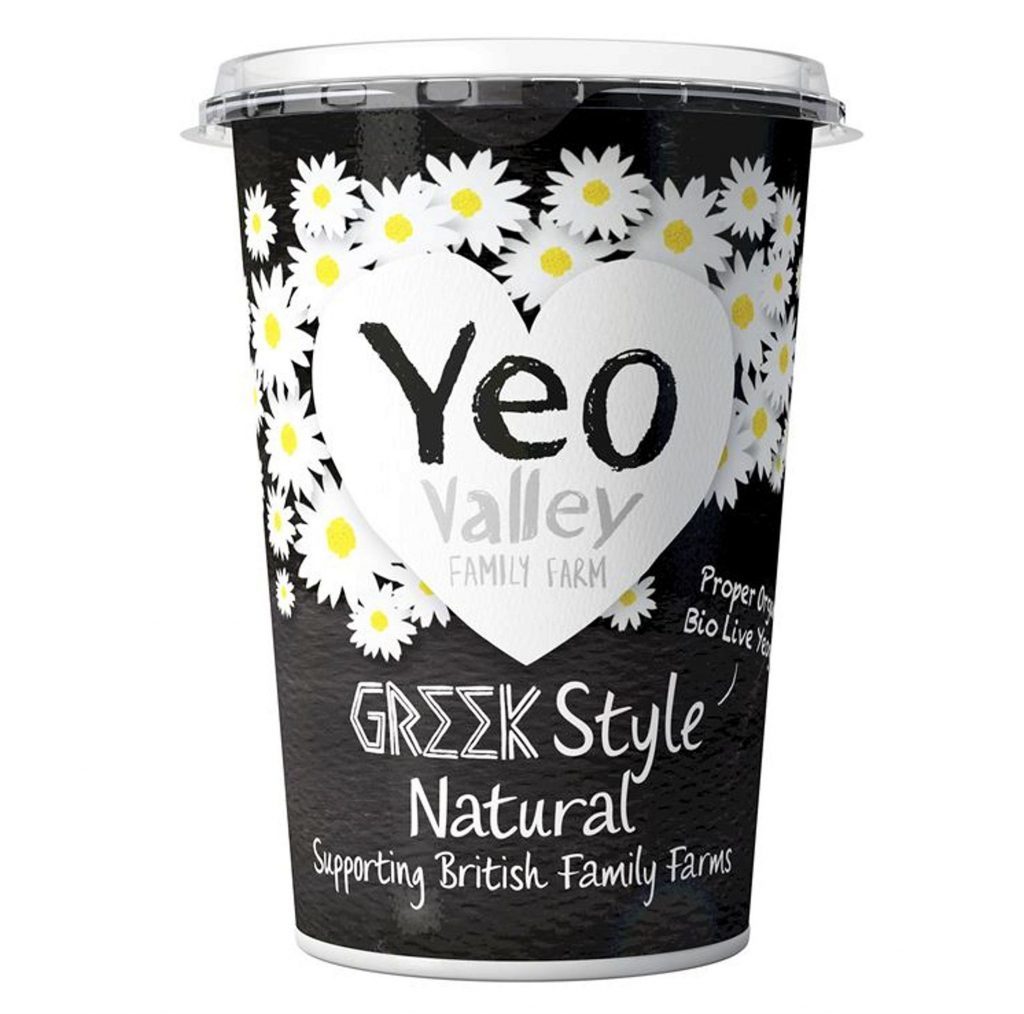Food may be more trendy than ever, but Diana Henry believes we’d all be happier in the kitchen if we remembered cooking’s a life skill – not a hobby. She tells Ella Walker about the inspiration behind her 10th cookbook
We tuck ourselves into a nook in an overcrowded cafe, the coffee machine belching wildly, and compare states of bedraggledness – Diana Henry’s had a late night; my hair has frizzed in the rain.
But despite this – and the fact we’re wedged in this fogged up cafe because the original venue, Diana’s kitchen, is being hurriedly redecorated thanks to a leak just days before the launch party of her new book, Simple – she’s on great form.
“It’s nonsense that people can’t cook, complete nonsense,” the award-winning food writer practically shouts. “If you like eating stuff and you know a few things, like how long it takes to roast a chicken, or how to put a tray of red peppers in the oven, you could make really good stuff.”
Her 10th recipe collection, Simple, makes that process even easier.
Building on her fourth book, Cook Simple (which was “never as big as I wanted it to be”), it’s divided into clear sections, including chicken, fish and eggs (the building blocks of mealtimes, as Henry sees them), and provides a slew of straightforward ways to cook and eat them.
“I’m a food writer and I still think, ‘What can I do with chops? What can I do with that salmon fillet? What can I do with pasta?’ And I think most people think about their weekday meals like that,” says Diana, explaining her approach. “When I worked in telly, I used to come home on the Tube and keep a notebook which had lists in it: ‘Chicken thighs – what you can do with them; Salmon fillets – what you can do with them’, and I just kept adding to that.”
While the Northern Ireland-born journalist started out in TV, making music and arts programmes and human interest documentaries, as well as TV Dinners with Hugh Fearnley-Whittingstall, Diana, 52, switched to food writing when she had her first child.
“I was a massively keen cook, had him, and I was just knackered! He cried all the time so I always had to carry him around,” she remembers.
For some time, her first book was even going to be called Cooking From The Hip, as it was about cooking with one hand “because you had a baby in the other”.
That baby just turned 18, but Diana still has “as much trouble as anyone else getting a meal on the table on a Wednesday night”, so Simple is a way of solving that problem.
In all her writing, she recognises that many find food – and wrangling it into an edible state – a chore, often stressful, or see cooking as a realm reserved purely for obsessed foodies.
“People see cooking as a hobby. It’s not a hobby – it’s a non-negotiable life skill,” she says matter-of-factly, noting that between poor cookery classes at school and an ongoing national obesity crisis, we’re struggling with a mindset that needs rattling.
“I want people to love food and care about it, but at the same time, I want them to not think about it at all – just let it go. We’ve become really over-anxious about it,” she muses. “Food’s about wonderfulness and poetry and memory and joyfulness – but it’s very easy to lose that.”
She’s much more interested in what home cooks do than what chefs are doing, and you can find lots of recipes she’s borrowed from friends in Simple.
“When you swap recipes, you have a connection. Food is about connecting, and I do like the process of cooking; I like dealing with olive oil and fish and cutting lemons,” Henry explains. “That’s another reason why I think we should cook every day, there’s a real, small, sensual pleasure in it – it’s those small things that make a better life.”
Ten books in, Diana is still planning another four ahead in her mind (“I’m a workaholic”), with no sign of slowing.
“I’m 52 now – someone suggested that it was about time I hung up my spurs. I thought, ‘You’ve got to be kidding!’
“I started doing this at 35, it was my second career, and I’ve hardly begun!” she says with a grin. “I’m not nearly finished.”
Want to cook Simple too? Try these three recipes from Diana Henry…
:: CUMIN-CORIANDER ROASTED CARROTS WITH POMEGRANATE AND AVOCADO
(Serves 6 as a starter, or 8 as a side dish)
For the salad:
30 young carrots, ideally slim
4tbsp extra virgin olive oil
2tsp cumin seeds
1tsp coriander seeds, crushed
1tsp chilli flakes
Salt and pepper
3 ripe avocados
25g walnut pieces, toasted
100g watercress, coarse stalks removed
Leaves from a small bunch of coriander
250g Greek yogurt
1 garlic clove, crushed
Seeds from 1/2 pomegranate
For the dressing:
3tsp pomegranate molasses
1 garlic clove, crushed
1/4tsp Dijon mustard
6tbsp extra virgin olive oil
1/4tsp honey
Squeeze of lemon juice
Preheat the oven to 200C/400F/gas mark 6.
Trim the carrots at the tops but leave a bit of green tuft on. If you can’t find slim carrots, halve or quarter large ones. Don’t peel them, just wash well. Put in a roasting tin in which they can lie in a single layer. Add the olive oil, spices and seasoning. Turn the carrots over in this to ensure they are all well coated. Roast in the oven for about 30 minutes; they will become tender and shrink slightly. Be careful not to overcook them.
To make the dressing, just whisk everything together with a fork. Halve and pit the avocados, cut into slices, then carefully peel each slice. Put everything except the yogurt, garlic and pomegranates into a broad shallow bowl (or onto a platter) and gently toss in three-quarters of the dressing. Mix the yogurt with the garlic and dot spoonfuls of this among the vegetables, then scatter with the pomegranate seeds. Spoon on the rest of the dressing and serve.
:: PORK LOIN WITH PUMPKIN PUREE AND PECORINO
(Serves 8)
For the pork:
2kg boneless pork loin, skin off
6 garlic cloves, sliced
3tsp fennel seeds
1tsp chilli flakes
4tbsp olive oil
Salt and pepper
For the puree:
1.2kg butternut squash or well-flavoured pumpkin
Olive oil
Freshly grated nutmeg
100g mascarpone
Pecorino cheese, shaved, to serve
Salt and pepper
Lay the pork on a board, flesh side up, and make incisions all over it with a sharp knife. Push slivers of garlic into the incisions. Crush the fennel and chilli in a mortar and pestle, add the olive oil, season and rub this all over the flesh, pushing bits down inside the slits. Put in a dish, cover and put in the fridge overnight, then return it to room temperature before cooking.
Preheat the oven to 220C/425F/gas mark 7. Roll the loin and tie at intervals with kitchen string (not too tight; it should hold its shape, not look like a sausage). Cook for 25 minutes. Reduce the oven temperature to 180C/350F/gas mark 4 and cook for one hour, basting now and then.
Cut the squash into wedges and remove the seeds. Put the wedges into a roasting tin, drizzle with olive oil, season and bake alongside the pork until completely tender, about 40 minutes.
Check the pork for doneness; the juices should run clear with no trace of pink when pierced.
Cover with foil, insulate (I use tea towels) and allow to rest for 15 minutes.
Discard the skin from the squash. Puree with plenty of seasoning, nutmeg and the mascarpone. Gently heat, then scrape into a warm dish and top with pecorino shavings. Serve with the pork.
:: LEMON AND LAVENDER CAKE
(Serves 8)
Unsalted butter, for the tin
300g granulated sugar
3/4tbsp dried lavender
175g plain flour
1/2tsp baking powder
1/2tsp bicarbonate of soda
1/4tsp salt
2 large eggs, lightly beaten
250g Greek yogurt
125ml mild-flavoured olive oil
Finely grated zest of 1 unwaxed lemon, plus 1 tbsp lemon juice
Icing sugar, to dust
Sprigs of fresh lavender, to serve
For the icing:
150g icing sugar,
2tbsp lemon juice, sifted
Mix the icing sugar with the lemon juice until smooth.
Preheat the oven to 180C/350F/gas mark 4. Butter a 20cm diameter, 6cm deep cake tin and line the base with baking parchment.
Put the granulated sugar and lavender into a food processor and whizz until the lavender has broken down.
Sift the flour, baking powder, bicarbonate of soda and salt together into a bowl. Stir in the lavender sugar. In a jug, mix the eggs with the yogurt and oil. Make a well in the centre of the dry ingredients and gradually stir in the wet ingredients. Add the lemon zest and juice, but don’t over-mix. Scrape into the prepared tin.
Bake for 45-50 minutes, or until the cake is coming away from the sides of the tin and a skewer inserted into the middle comes out clean.
Turn it out, peel off the paper and set on a wire rack until cold. Dust with icing sugar just before serving and decorate with sprigs of fresh lavender.
:: Simple by Diana Henry is published in hardback by Mitchell Beazley, priced £25. Photography by Chris Terry. Available now
THREE OF THE BEST… Greek yogurts
:: Sainsbury’s Greek Style Natural Yogurt 500g, £1 (Sainsbury’s)
Not too rich or sweet, this pot contains around four servings and is particularly tasty when topped with fresh berries and granola.
:: Yeo Valley Greek Style Natural Yogurt 450G, £1.70 (Waitrose)
For a more decadent breakfast option, this is thick, creamy and needs nothing more than a spoon and a drizzle of honey. Also good as a dip for flatbread if you fancy something cool and savoury.
:: Tesco Greek Style Honey Yogurt 450G, £1.10 (Tesco)
No need to grab the honey from the cupboard, this pot already comes with it. Quite sweet and dessert-like, add chopped nuts and stewed fruit to up the ante.
